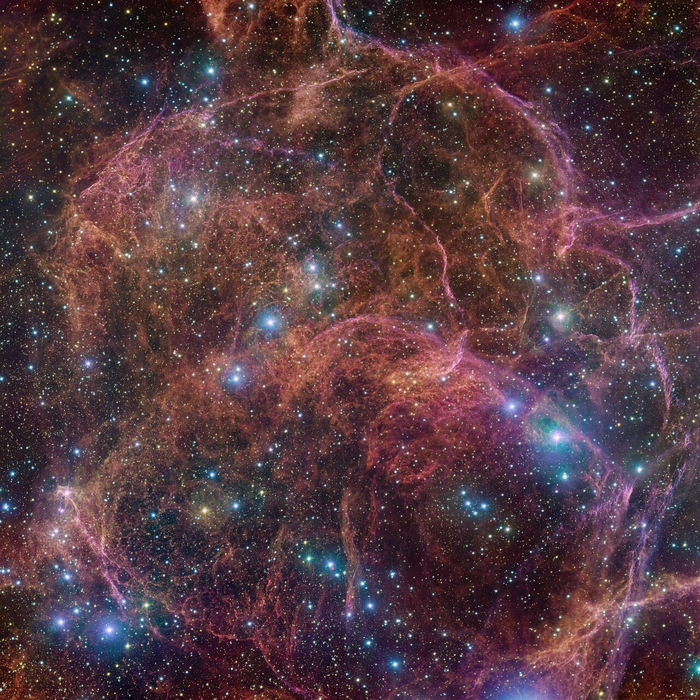Ghost of a dead star glows pink in new Very Large Telescope image
The clouds of gas surrounding a dead star still glow 11,000 years ago after a supernova blasted heat and material out into space

Your support helps us to tell the story
From reproductive rights to climate change to Big Tech, The Independent is on the ground when the story is developing. Whether it's investigating the financials of Elon Musk's pro-Trump PAC or producing our latest documentary, 'The A Word', which shines a light on the American women fighting for reproductive rights, we know how important it is to parse out the facts from the messaging.
At such a critical moment in US history, we need reporters on the ground. Your donation allows us to keep sending journalists to speak to both sides of the story.
The Independent is trusted by Americans across the entire political spectrum. And unlike many other quality news outlets, we choose not to lock Americans out of our reporting and analysis with paywalls. We believe quality journalism should be available to everyone, paid for by those who can afford it.
Your support makes all the difference.The European Southern Observatory (ESO) just released an image of the ghostly afterglow of a massive star’s fiery death.
The ESO has captured a 554-million pixel image of the Vela supernova remnant, a wispy formation still glowing with the energy released by a supernova, around 11,000 years ago. Found 800 light years away in the constellation Vela, also known as the Sails, the supernova remnant is one of the closest of its kind to Earth.
The new image shows myriad interlocking filaments of gas glowing in shades of pink and orange. The colors are not entirely natural, but the result of using different camera filters — red, green, blue, and magenta. The bright blue stars seen in the image are in the foreground, sitting between Earth and the supernova remnant itself.
The ESO also shared smaller images highlighting portions of the larger image to Twitter on Monday.
The structure of the supernova remnant is a result of the supernova itself.
When supermassive stars consume all of their available fuel for the thermonuclear reactions that support them, their own gravity causes them to collapse inward, triggering a supernova explosion that ejects much of their mass into space. The ejected gas and shockwaves from the explosions compress gas surrounding the star in space, creating the tendrils and filaments seen in the image.
Some massive stars contract into black holes following a supernova, but in the case of the Vela supernova remnant, the remaining mass of the star contracted down into a very small, dense corpse known as a neutron star. Neutron stars are so dense that the positively charged protons and negatively charged electrons in the stars’ constituent atoms are fused together to form neutrons, from which the stars get their name.
The image was taken with the VLT Very Large Survey Telescope (VST), located at ESO’s Paranal Observatory in Chile. The observatory is also the site of ESO’s Very Large Telescope, which is the reason for the VLT acronym in the name of the VST.
Unlike the Very Large Telescope, the VST is designed to take images of wide swaths of sky at once — a survey - in visible and ultraviolet light. The new image was taken as part of one of those surveys, the VST Photometric Hα Survey of the Southern Galactic Plane and Bulge, which has been mapping our galaxy for more than seven years.
The ESO is currently developing what will be the largest telescope observing in visible light when it comes online in 2027, the Extremely Large Telescope (ELT). Where the VST uses a primary mirror of about 8 feet in diameter, and the Very Large Telescope uses and array of four telescopes that each use primary mirrors of about 37 feet in diameter, the ELT will use a segmented primary mirror 130 feet across.
Join our commenting forum
Join thought-provoking conversations, follow other Independent readers and see their replies
0Comments